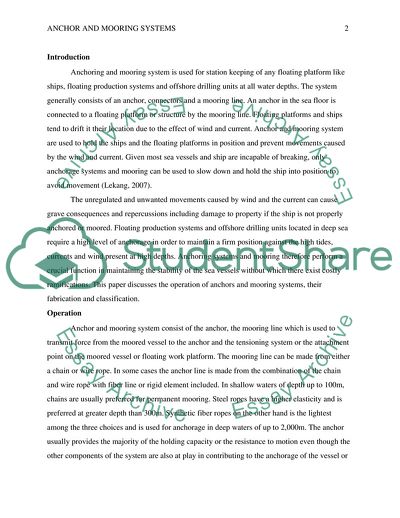Cite this document
(Anchor and Mooring Systems Coursework Example | Topics and Well Written Essays - 2250 words - 1, n.d.)
Anchor and Mooring Systems Coursework Example | Topics and Well Written Essays - 2250 words - 1. https://studentshare.org/engineering-and-construction/1800805-anchor-and-mooring-systems
Anchor and Mooring Systems Coursework Example | Topics and Well Written Essays - 2250 words - 1. https://studentshare.org/engineering-and-construction/1800805-anchor-and-mooring-systems
(Anchor and Mooring Systems Coursework Example | Topics and Well Written Essays - 2250 Words - 1)
Anchor and Mooring Systems Coursework Example | Topics and Well Written Essays - 2250 Words - 1. https://studentshare.org/engineering-and-construction/1800805-anchor-and-mooring-systems.
Anchor and Mooring Systems Coursework Example | Topics and Well Written Essays - 2250 Words - 1. https://studentshare.org/engineering-and-construction/1800805-anchor-and-mooring-systems.
“Anchor and Mooring Systems Coursework Example | Topics and Well Written Essays - 2250 Words - 1”. https://studentshare.org/engineering-and-construction/1800805-anchor-and-mooring-systems.


